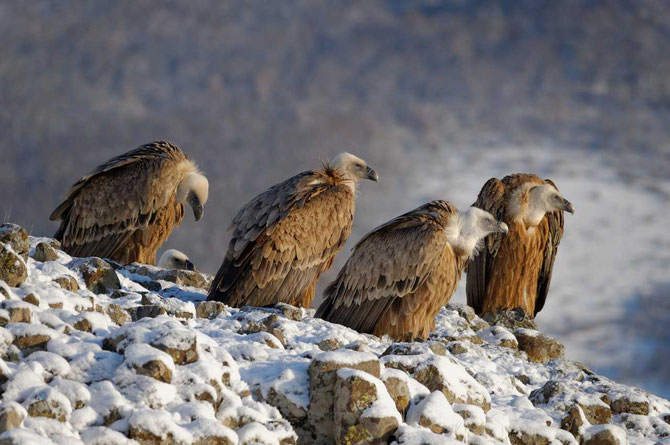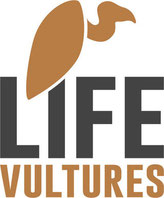
The LIFE Re-Vultures project team from the Bulgarian Society for the Protection of Birds (BSPB) counted a total of 99 Griffon Vultures pairs during the regular monitoring of the population of the species along the Arda River valley in the Eastern Rhodopes.
New record of Griffon Vulture pairs in the Eastern Rhodopes
The 99 pairs are a record high number, with three more pairs compared to last year’s count. In February, BSPB teams visited all known present and historical breeding sites of the species in the Eastern Rhodopes. They registered 99 occupied nests by pairs, of which 83 are already incubating and the rest still repairing and building their nests. The second stage of the monitoring will be held in May to monitor the number of juveniles. Griffon Vultures lay only one egg between January and February, and the chick hatches in March or April.
Are Cinereous Vultures breeding in Bulgaria again?
During the monitoring, the BSPB team also observed mating behaviour of two Cinereous Vulture pairs on the feeding stations of “Studen kladenets” Game Reserve and near the village of Potochnitsa. The Cinereous Vulture is no longer a breeding species in Bulgaria since decades now. Many birds are coming from the only Balkan colony of the species in Dadia, Greece, to visit the feeding stations along the Arda river valley and feed there. The improved food availability, the conservation measures, the targeted efforts to attract them close to the Arda River valley, as well as the observed mating behaviour of birds in recent seasons, gives hope the LIFE Re-Vultures team hope that this majestic species will nest again in the country.
Results of conservation actions in Bulgaria
The first systematic data on the species was collected by the BSPB in the mid-1980s when the first targeted supplementary feedings for the vultures in Bulgaria began. Since then, several direct conservation measures taken by the BSPB in the Eastern Rhodopes have allowed the gradual increase of the Griffon Vulture colony from 10 pairs in 1991 to 99 pairs in 2020. The conservation of the Griffon Vulture in the Eastern Rhodopes is one of the most successful nature conservation initiatives in Bulgaria. Currently, the vulture conservation activities in the Eastern Rhodopes are carried out within the LIFE Re-Vultures project.
LIFE Re-Vultures

Starting in 2016, the five-year LIFE RE-Vultures project was developed by Rewilding Europe, in collaboration with the Rewilding Rhodopes Foundation the Bulgarian Society for the Protection of Birds, WWF Greece, the Hellenic Ornithological Society and us here at the Vulture Conservation Foundation. The aim of the project is to support the recovery and further expansion of the populations of Cinereous and Griffon Vultures in the cross-border region of the Rhodope Mountain by improving natural prey availability, monitoring movements of birds to help understand the threats they face and carrying out activities that will reduce the mortality of the populations from threats such as illegal wildlife poisoning and collisions with electricity infrastructure.




